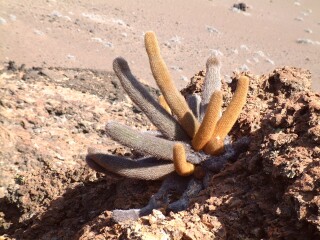
|
Flora & Fauna Areas Galapagos Flora/Fauna Related Pages Ecuador HomeGalapagos Letters Galapagos Cruising |
Galapagos Flora
This section highlights the flora (plants) of The Galapagos Islands.
| One of the first plants to colonize a new lava field, the Lava Cactus is found on barren black lava flows such as this one on Bartolome Island. It seems to have no food value even to the lizards, although its large white flowers may offer food for the carpenter bee and other insects. |  |
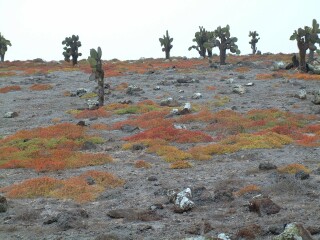 |
Covering the rocky terrain of many of the coastal areas is the Galapagos
Carpetweed. This low-lying perennial herb has fleshy, cylindrical
leaves with small, white star-shaped flowers -- a favorite food of the
lava lizards. It is normally green, but during the dry season it turns
orange-red.
Opuntia (prickly pear) cacti stand tall on the arid landscape of S. Plaza Island. Here, the land iguanas stake out their own cactus, and wait for the tasty fruits to fall. |
 The espino, or spiny bush grows on inhospitable-looking beaches. In the hot sun its few leaves are curled up and inconspicuous. This one grew to about six or seven feet high on the beach on Bartolomé. It produces a sour red or brown fruit edible to both finches and humans. |
|
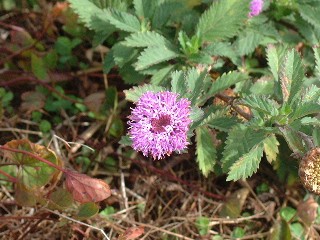 An unidentified plant in bloom. San Cristóbal Island. |
 The intricate Passion Flower can be found on the vines climbing over shrubs or rocks or trees from near sea level to the Scalesia zone (about 300 to 600 meters above sea level). The vine produces a fruit similar to the cultivated type which turns from green to orange when it ripens. |
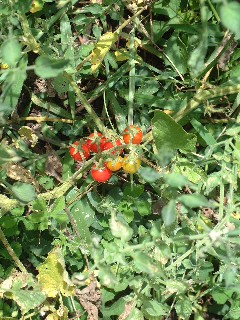 A veritable feast of small endemic tomatoes awaits the hiker in the Santa Cruz highlands, at least when we were there in May. Sweeter than "Sweet One Thousands" that we grew in the Northwestern US, these tomatoes are either red or yellow, with a thick skin. Both tortoises and mockingbirds eat the fruits and aid in the germination and dispersal of the plant. |
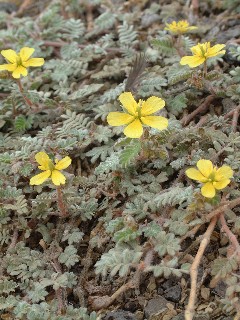 The deceptively lovely Goat's Head plant is also know as the puncture plant because of its spiked fruits which can stab right through Teva sandals! This is a low, creeping herb found on the sea level, arid zone of islands. The seeds (shaped like a goat's head) are carried on the webbed feet of birds, and the bottoms of expensive sandals! |
Top Level: Home | Destinations | Cruising Info | Underwater | Boat Guests | Ocelot | Sue | Jon | Amanda | Chris | Site Map | Make a Comment
|
If our information is useful, you can help by making a donation |
Copyright © 2000‑ Contact: Jon and Sue Hacking -- HackingFamily.com, svOcelot.com. All rights reserved.